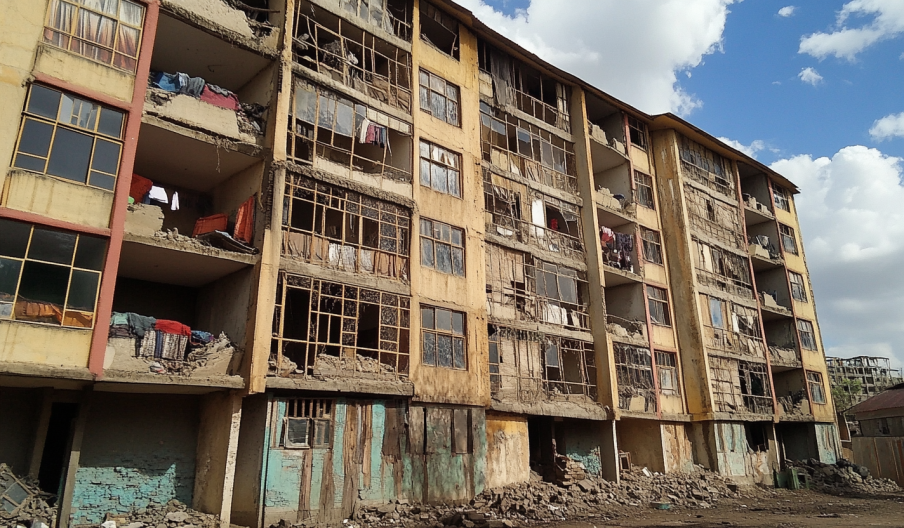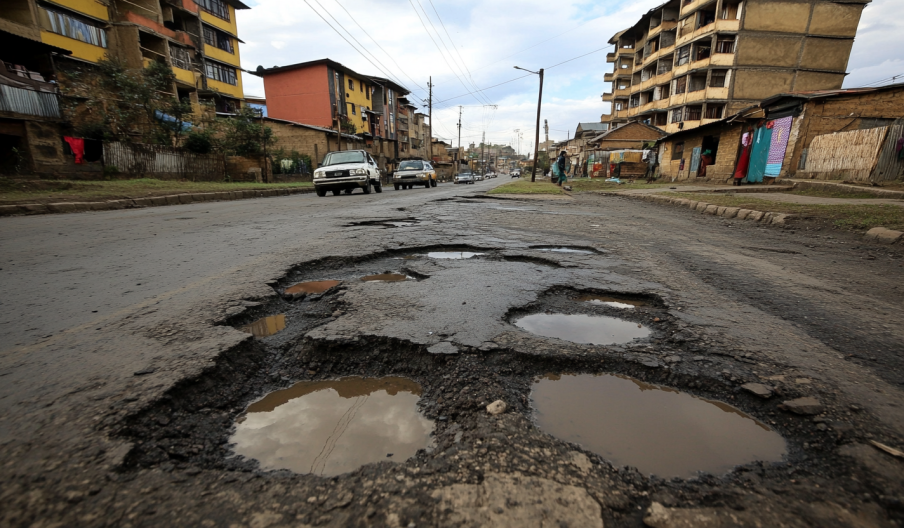- In many parts of Kenya, the urban landscape can only be described as chaotic.
- This glaring lack of urban planning has resulted in disorderly neighbourhoods.
- If you dig deeper, you’ll find that many of these structures are erected without proper permits or any form of inspection.
- According to the National Construction Authority (NCA), over 50% of buildings in Nairobi fail to meet basic safety standards, primarily due to the use of substandard materials and poor workmanship.
In many parts of Kenya, particularly in the rapidly expanding outskirts of Nairobi, the urban landscape can only be described as chaotic. Buildings seem to sprout haphazardly, with ‘everything everywhere’—from residential homes to commercial establishments like bars, vibandas (small roadside stalls), and even churches—all co-existing without any clear zoning plan. This glaring lack of urban planning has resulted in disorderly neighbourhoods where tall apartment complexes and office buildings stand shoulder-to-shoulder with semi-permanent kiosks.
But how did we get here?
If you dig deeper, you’ll find that many of these structures are erected without proper permits or any form of inspection. This rampant disregard for building regulations and standards points to a systemic problem fuelled by corruption, a weak enforcement framework, and an insatiable demand for affordable housing and business premises. Unfortunately, these shortcuts come with severe repercussions:
Table of Contents
Dangerous Structures

In 2024 alone, Kenya has witnessed numerous building collapses, involving both completed and ongoing constructions. According to the National Construction Authority (NCA), over 50% of buildings in Nairobi fail to meet basic safety standards, primarily due to the use of substandard materials and poor workmanship. Many developers skip mandatory inspections to save costs, putting the lives of residents and workers at risk. The tragic collapse of a building in Ruiru earlier this year, which claimed multiple lives, highlights the fatal consequences of ignoring regulations.
Disturbances in Residential Areas
In what should be quiet, residential neighborhoods, unregulated construction has led to increased noise pollution and disruption. It’s not uncommon to find a nightclub or bar operating next to a school or church, causing a clash of activities and significantly lowering the quality of life for residents. The lack of proper zoning laws has led to chaotic environments, making it difficult for families to enjoy peace and safety in their own homes. According to a 2023 survey by the Kenya Institute of Planners, over 40% of Nairobi residents report that noise and environmental pollution are their primary concerns, largely due to unregulated businesses in residential zones.
A Spike in Crime and Safety Issues
When buildings pop up like mushrooms with no real plan, the result isn’t just chaos—it’s insecurity. Without proper zoning and oversight, narrow, poorly lit paths snake between constructions, creating ideal hiding spots for criminals. According to the Kenya National Bureau of Statistics (KNBS), crime rates can surge by up to 30% in these unregulated areas. Residents face a heightened risk of theft, vandalism, and even violent crimes, which makes day-to-day life stressful and erodes the sense of community safety that well-planned neighbourhoods typically enjoy.
Infrastructure Overload

With unplanned growth comes a heavy toll on infrastructure. Ever wondered why there are numerous water shortage cases or why traffic is unbearable? Many of these rogue constructions aren’t in the urban plan, leading to chaos. According to the Nairobi City Water and Sewerage Company, illegal connections alone cause 20% of water losses, worsening the city’s already severe water shortage. It’s like adding more people to a party without increasing the food supply—everything gets stretched thin.
Nature Takes a Hit: Environmental Consequences
In areas with unauthorized construction, trees are often cleared, and buildings are erected even on riparian lands, severely disrupting the environment. This contributes to extreme flooding during rainy seasons, worsens air quality, and accelerates the urban heat effect. If you take note, you will realize that places such as Nairobi are hotter than they were. The National Environment Management Authority (NEMA) has warned that we’re losing valuable green spaces, which not only impacts air quality but also increases heat in the city and this generally in one way or the other affects quality of life.
Conclusion
The effects of unregulated building in Kenya are like a ripple in a pond—they spread far and wide, impacting safety, infrastructure, the environment, and even your wallet. We need a collective effort, from government officials to developers and the community, to tighten enforcement and embrace smart urban planning. Otherwise, we’ll continue paying the price, literally and figuratively, as our cities become more chaotic and less liveable.



